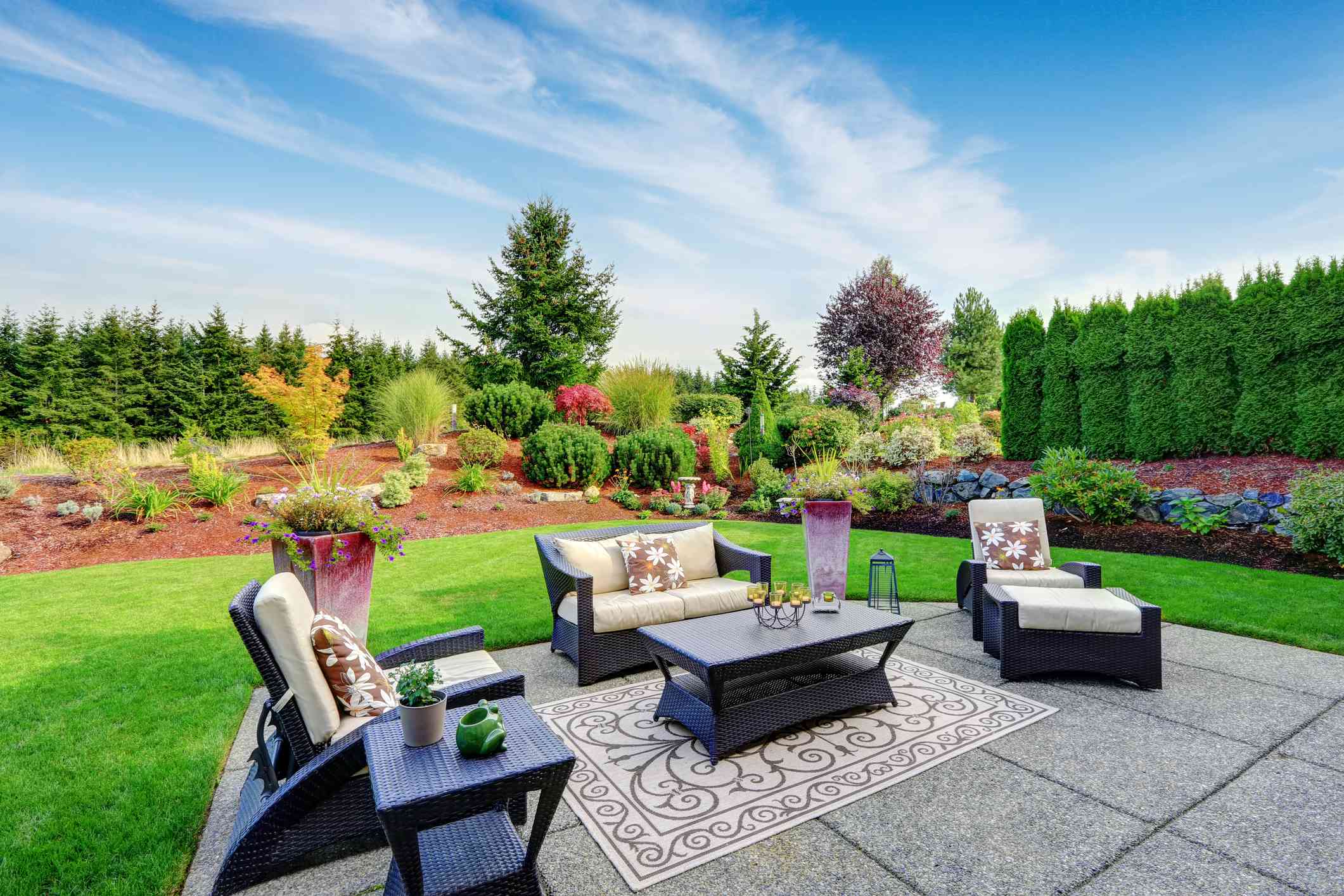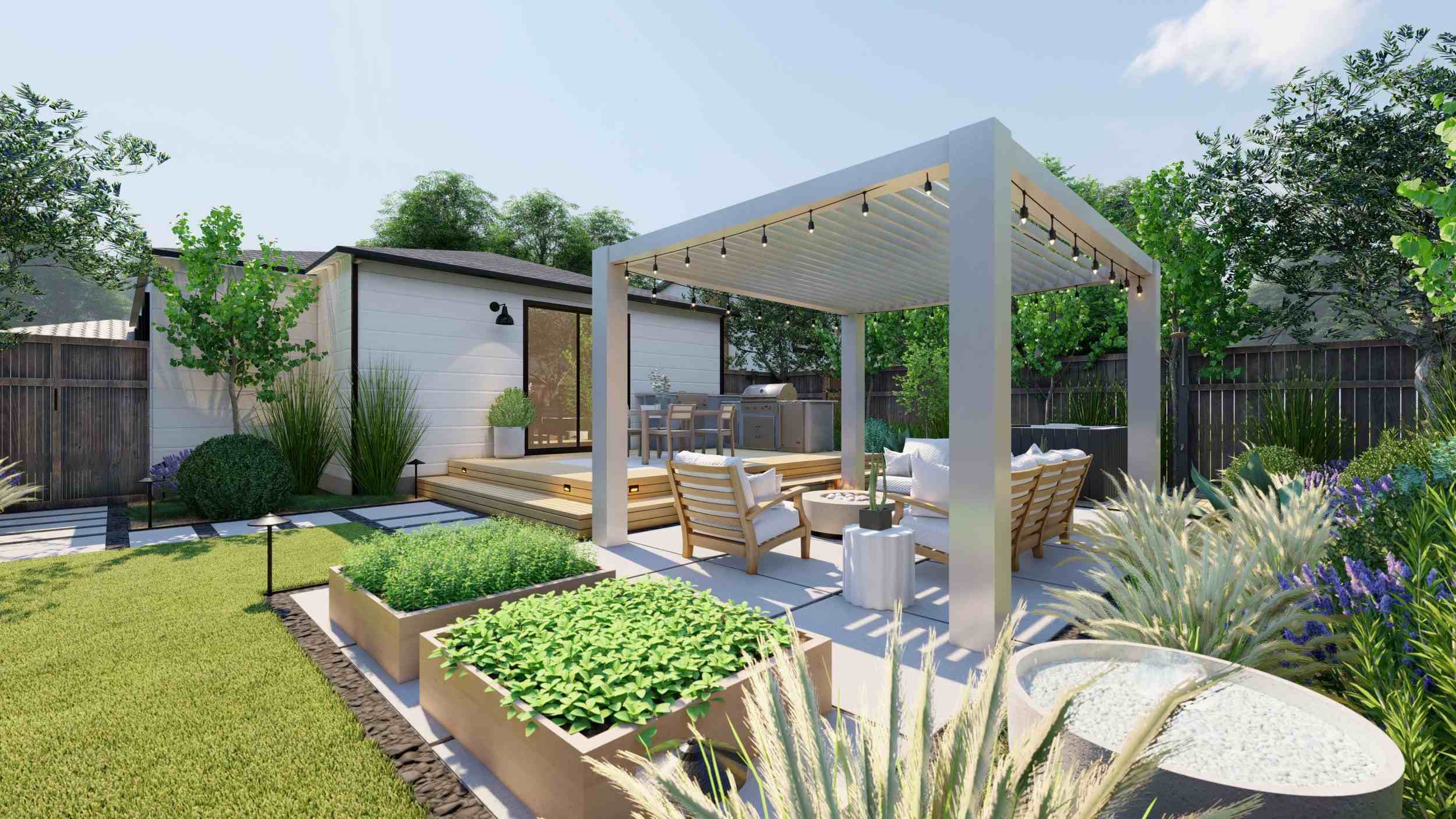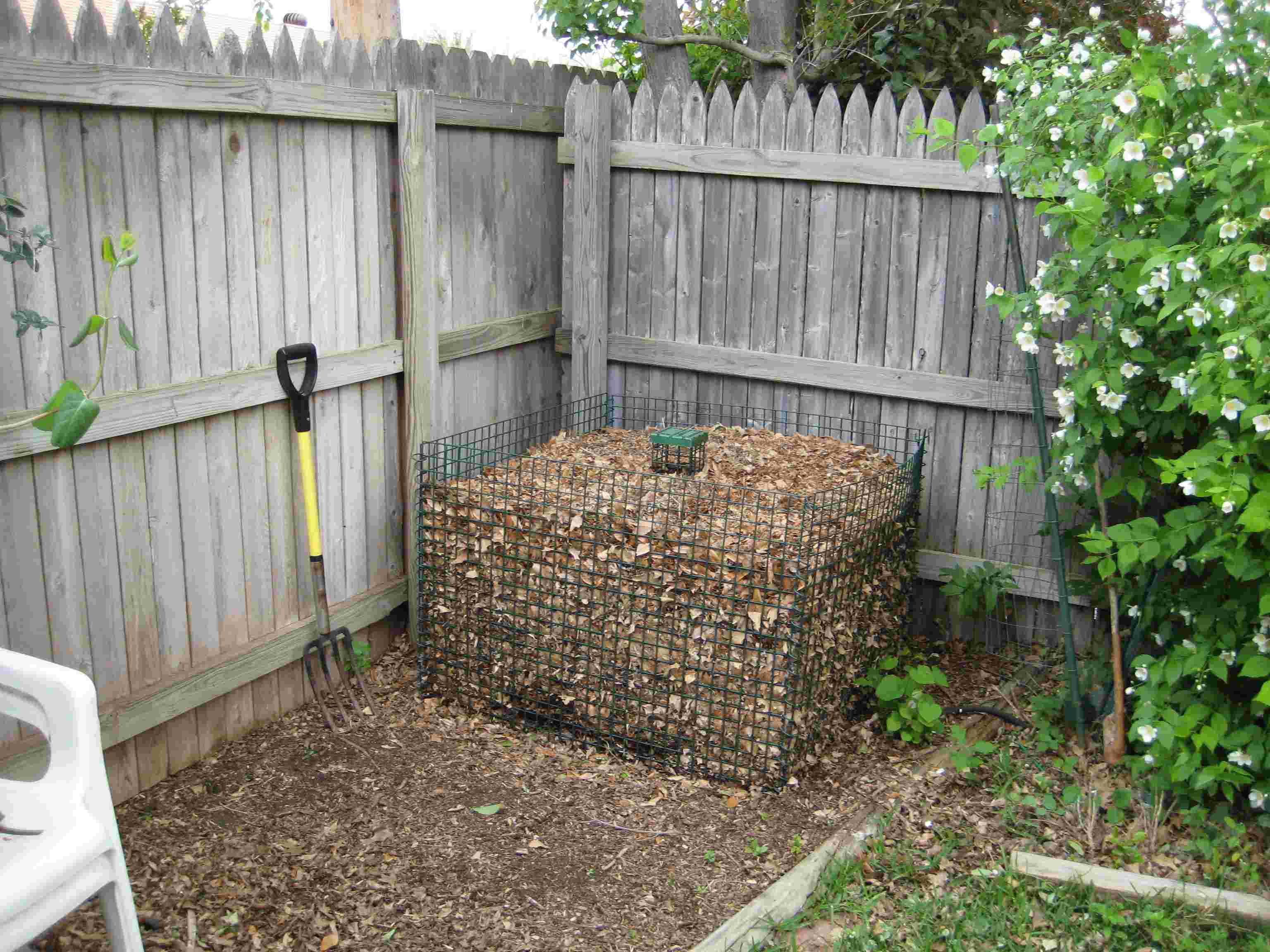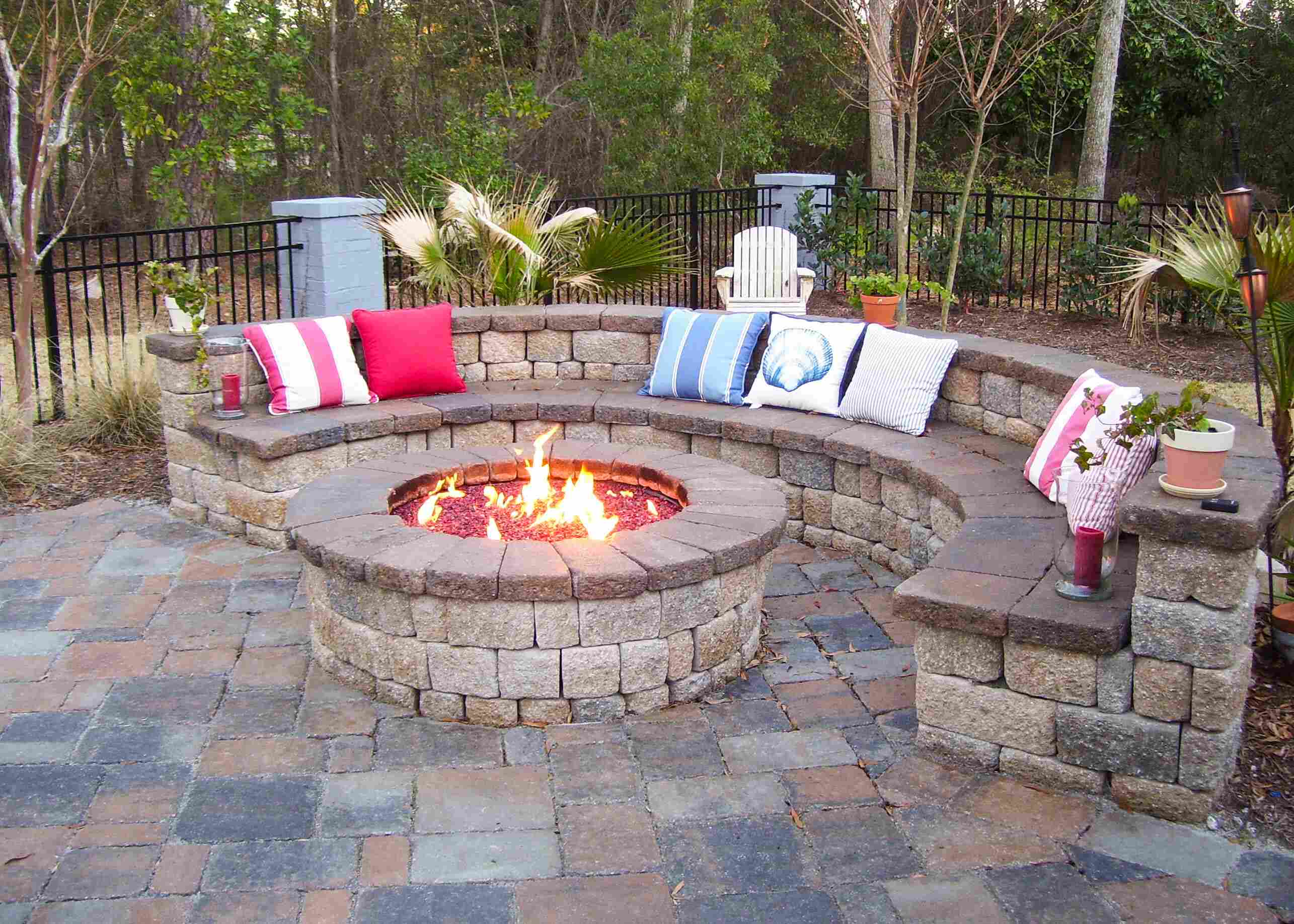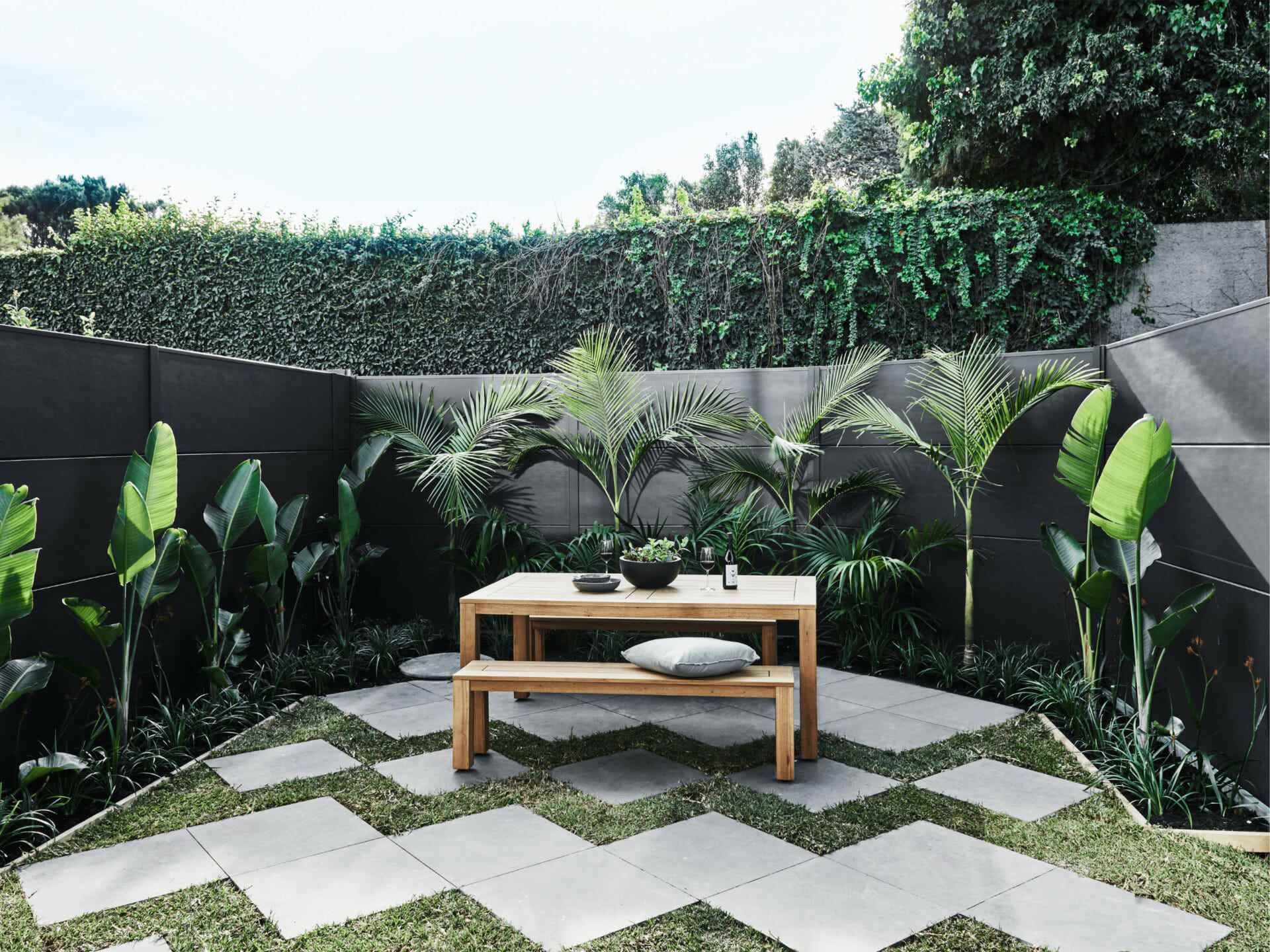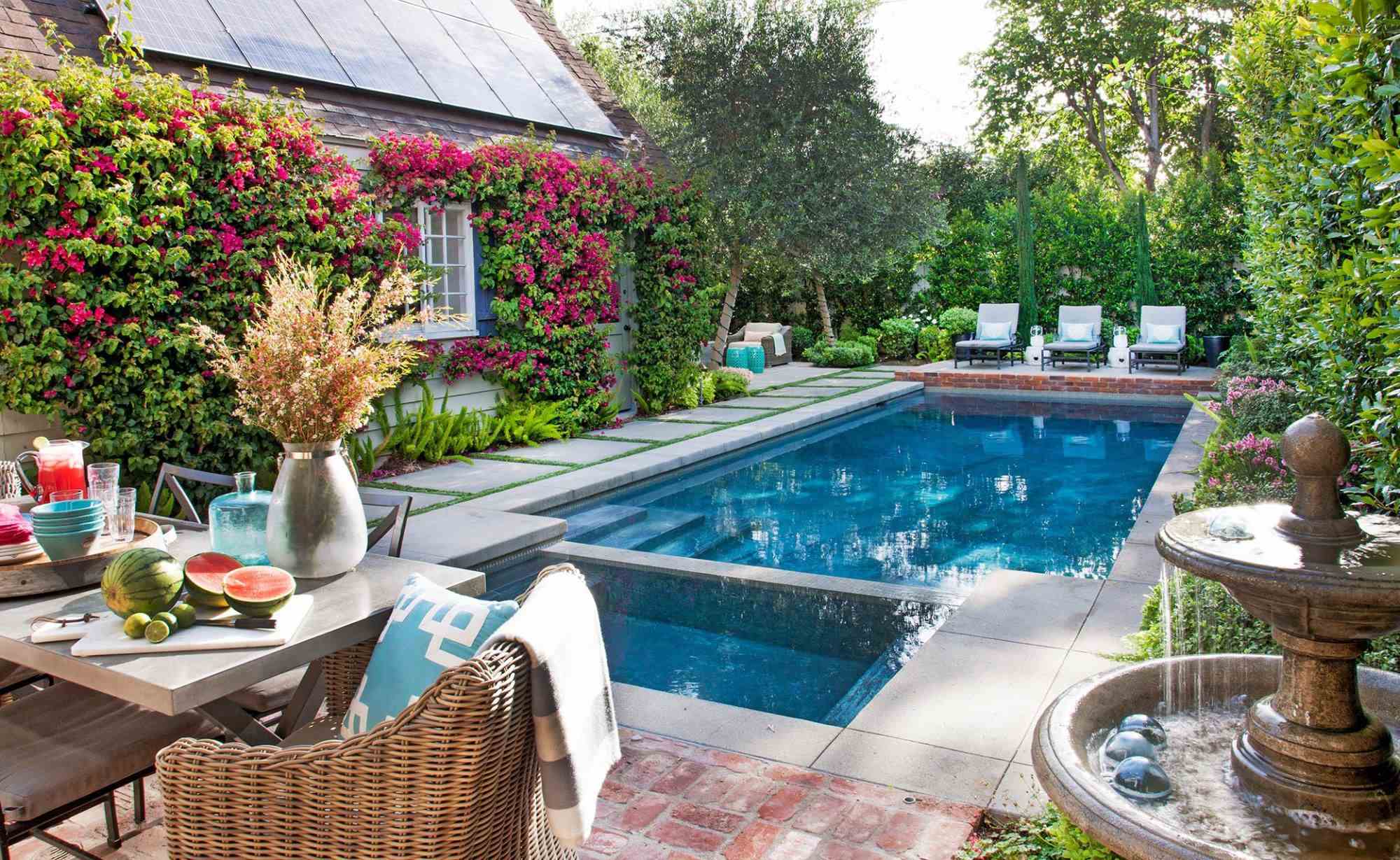Home>Garden Design>How To Make Your Backyard More Private
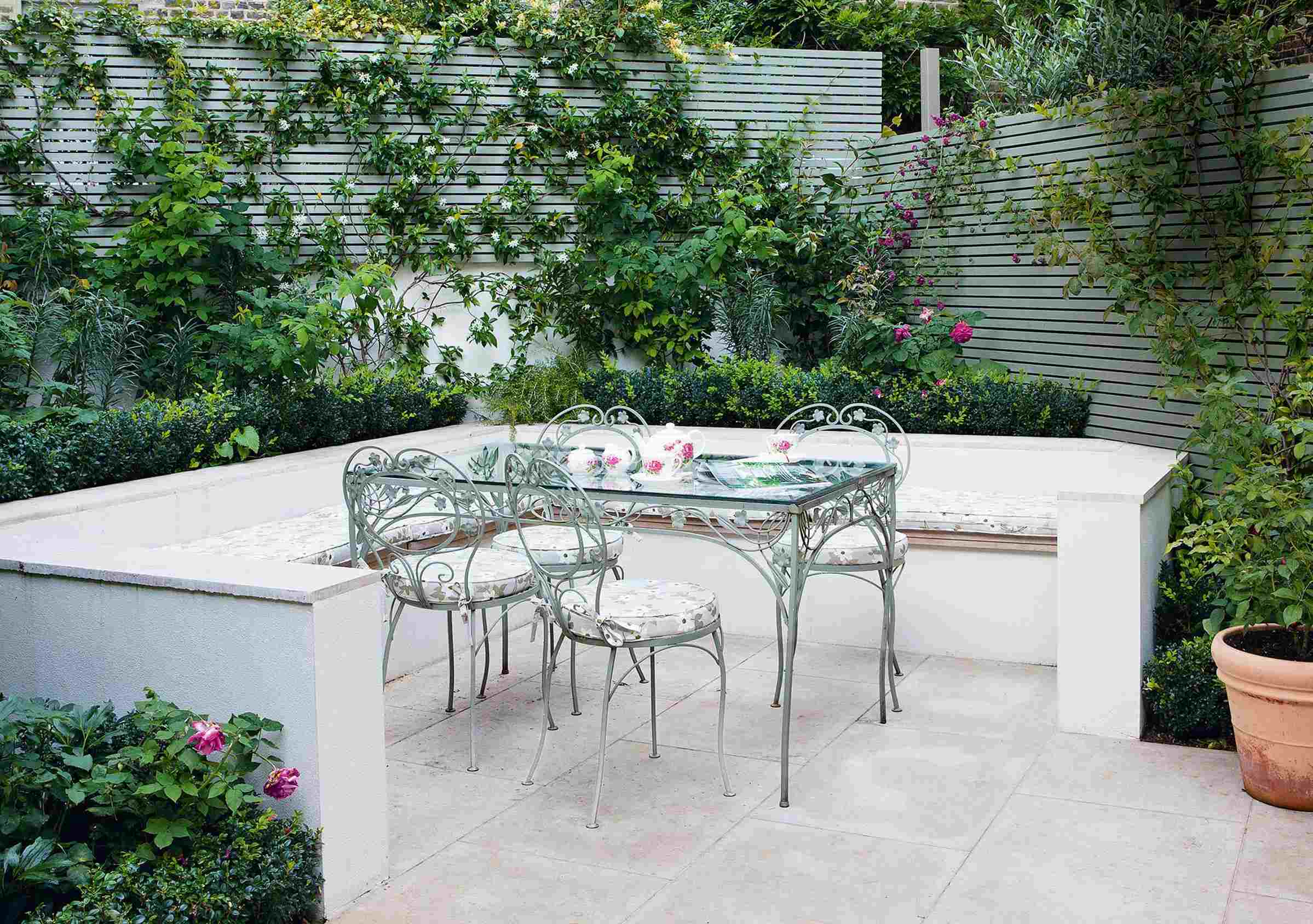

Garden Design
How To Make Your Backyard More Private
Modified: January 22, 2024
Discover effective landscape design ideas to transform your backyard into a private retreat. Enhance your outdoor space with innovative techniques for creating privacy and tranquility.
(Many of the links in this article redirect to a specific reviewed product. Your purchase of these products through affiliate links helps to generate commission for Chicagolandgardening.com, at no extra cost. Learn more)
Table of Contents
- Introduction
- Choosing the Right Privacy Solutions
- Planting Privacy Trees and Shrubs
- Installing a Privacy Fence
- Creating a Living Wall or Trellis
- Adding Privacy Screens or Curtains
- Incorporating Water Features
- Building a Pergola or Gazebo
- Utilizing Outdoor Furniture and Accessories
- Lighting Up Your Backyard
- Conclusion
Introduction
Imagine stepping into your backyard and being surrounded by a serene and secluded oasis. A place where you can escape from the hustle and bustle of everyday life, and enjoy some much-needed privacy. Creating a private backyard retreat not only enhances the beauty and functionality of your outdoor space, but it also provides a sense of peace and tranquility.
Whether you have nosy neighbors, a busy street nearby, or simply desire a more intimate setting, there are numerous privacy solutions available to transform your backyard into a secluded sanctuary. From natural elements like trees and shrubs to man-made options like fences and screens, you have the power to design a private outdoor space that perfectly suits your needs and preferences.
In this article, we will explore various privacy solutions that can make your backyard a more private and inviting space. We will delve into the benefits of planting privacy trees and shrubs, installing privacy fences, creating living walls or trellises, adding privacy screens or curtains, incorporating water features, building pergolas or gazebos, utilizing outdoor furniture and accessories, and lighting up your backyard. By the end, you will have a plethora of ideas to transform your backyard into a private oasis that reflects your personal style.
So, let’s dive into the world of landscape design and discover how to make your backyard more private and enchanting. Get ready to unleash your creativity and create an outdoor sanctuary that will leave you feeling refreshed and rejuvenated after every visit.
Choosing the Right Privacy Solutions
When it comes to enhancing privacy in your backyard, it’s important to choose the right solutions that not only provide the desired level of seclusion but also blend harmoniously with your overall landscape design. Here are a few factors to consider when selecting privacy solutions:
1. Purpose: Determine the primary purpose of your privacy needs. Are you looking to block out the view from neighboring properties, create a secluded area for relaxation, or shield your backyard from a busy street? Understanding your specific objectives will help you narrow down the most suitable privacy solutions.
2. Aesthetics: Consider how the privacy solutions will impact the overall aesthetics of your backyard. Whether you prefer a natural, rustic look or a more modern and contemporary style, choose privacy options that complement your existing landscape design and architectural features.
3. Maintenance: Evaluate the level of maintenance required for different privacy solutions. Some options, like planting privacy trees and shrubs, may require regular trimming and upkeep, while others, like installing a privacy fence, may require occasional repairs. Determine how much time and effort you’re willing to invest in maintaining your privacy solutions.
4. Budget: Establish a budget for your privacy project. Consider the initial cost of materials and installation, as well as any long-term maintenance expenses. This will help you prioritize and choose privacy solutions that align with your financial resources.
5. Local regulations: Familiarize yourself with any local regulations or homeowner association guidelines pertaining to privacy structures in your area. Ensure that your chosen privacy solutions comply with any height restrictions, setback requirements, or other regulations.
By carefully considering these factors, you can make informed decisions and select the privacy solutions that best meet your needs and preferences. Remember, the goal is to create a backyard that feels like a private retreat while still retaining its beauty and functionality.
Planting Privacy Trees and Shrubs
One of the most natural and aesthetically pleasing ways to add privacy to your backyard is by planting privacy trees and shrubs. Not only do they provide a sense of seclusion, but they also contribute to the overall beauty and ecological balance of your outdoor space. Here are some key considerations when choosing and planting privacy trees and shrubs:
1. Select the Right Species: Choose trees and shrubs that are well-suited to your climate, soil conditions, and available space. Consider factors such as height, spread, growth rate, and ability to provide year-round privacy. Some popular choices for privacy trees include arborvitae, leyland cypress, and privet, while common options for privacy shrubs include boxwood, holly, and juniper.
2. Plant in the Right Location: Determine the ideal location for your privacy trees and shrubs, taking into account sun exposure, soil drainage, and proximity to other structures. Planting them strategically along property lines or near windows can effectively block out unwanted views and create a lush and private backdrop for your backyard.
3. Consider the Maintenance: Different trees and shrubs have varying maintenance requirements. Some may need regular pruning and shaping to maintain their desired height and density, while others may be more low-maintenance. Factor in the time and effort you’re willing to dedicate to maintenance tasks, or consider hiring a professional landscaper if you prefer a hands-off approach.
4. Provide Adequate Watering and Care: Newly planted trees and shrubs require proper watering and care to establish healthy root systems. Ensure they receive sufficient water during the first growing season and thereafter. Mulching around the base of the plants can help conserve moisture and suppress weed growth.
5. Allow for Growth: Keep in mind the mature size of the trees and shrubs you choose, and allocate enough space for their growth. Proper spacing will prevent overcrowding and ensure the plants have room to develop to their full potential, providing optimal privacy in the long run.
Planting privacy trees and shrubs not only enhances the privacy of your backyard but also adds natural beauty, shade, and aesthetic appeal. With careful selection and placement, you can create a green and serene environment that offers privacy while enriching your outdoor living experience.
Installing a Privacy Fence
If you’re looking for a more immediate and solid solution for privacy in your backyard, installing a privacy fence is a popular choice. A well-designed and properly installed fence can create a sense of seclusion while adding security and defining the boundaries of your outdoor space. Here are some key considerations when installing a privacy fence:
1. Choose the Right Material: Privacy fences are available in a variety of materials, including wood, vinyl, metal, and composite. Each material has its own pros and cons in terms of durability, maintenance requirements, and aesthetic appeal. Consider your budget, desired look, and durability factors to determine the best material for your needs.
2. Determine the Height and Style: Privacy fences come in different heights and styles, so you can choose one that suits your privacy needs and complements your landscape design. For maximum privacy, opt for a fence that is at least 6 feet tall. Popular styles include solid panels, lattice, or a combination of both.
3. Check Local Regulations: Before installing a privacy fence, familiarize yourself with any local building codes or homeowner association guidelines that may dictate the allowable fence height, setback requirements, or material restrictions. Ensure that your planned fence complies with these regulations to avoid any potential issues.
4. Hire a Professional or DIY: Installing a privacy fence can be a complex and time-consuming task. If you’re not experienced in fence installation, it may be wise to hire a professional to ensure proper and secure installation. If you have the skills and tools, you can also opt to install the fence yourself, saving on labor costs.
5. Maintain and Protect: To keep your privacy fence looking its best and maintaining its privacy functions, regular maintenance is essential. This may include cleaning, staining, or painting the fence, as well as inspecting for any needed repairs or replacements. Proper maintenance will help prolong the life of your fence and ensure its effectiveness in providing privacy.
An installed privacy fence can instantly transform your backyard into a private sanctuary. It not only offers privacy but also acts as a visual barrier, noise reducer, and windbreak. By selecting the right material, height, and style, and properly maintaining your fence, you can enjoy a private and peaceful outdoor space for years to come.
Creating a Living Wall or Trellis
A living wall or trellis is a fantastic way to add both privacy and beauty to your backyard. By utilizing vertical space and incorporating climbing plants, you can create a natural and vibrant privacy solution. Here are some key considerations when creating a living wall or trellis:
1. Choose the Right Plants: Select climbing plants that thrive in your climate and are well-suited for vertical growth. Popular choices include ivy, jasmine, clematis, and climbing roses. Consider factors such as sunlight requirements, growth habits, and maintenance needs when choosing your plants.
2. Install a Sturdy Structure: Create a strong and stable foundation for your living wall or trellis. It can be made of wood, metal, or other suitable materials. Ensure that it can support the weight of the plants as they grow and provide adequate anchoring to secure the structure in place.
3. Provide Proper Support: Install support wires, mesh, or trellis panels that allow your climbing plants to attach and grow. Ensure that the support system provides enough space for the plants to spread out and cover the desired area for privacy. Regularly train the plants to grow along the structure for optimal coverage.
4. Consider Maintenance: Climbing plants may require regular pruning, training, and maintenance to keep them healthy and under control. Stay on top of any necessary trimming to prevent overgrowth and maintain the desired level of privacy. Additionally, monitor watering needs and provide suitable fertilizer to encourage vigorous growth.
5. Enhance with Other Elements: Consider incorporating other elements to enhance the visual appeal of your living wall or trellis. You can add decorative features such as hanging baskets, outdoor artwork, or vertical garden planters. These elements can further enhance the privacy and create a unique focal point in your backyard.
A living wall or trellis not only provides privacy but also adds a lush and green element to your outdoor space. It can act as a natural barrier, screen undesirable views, and create a serene and intimate atmosphere. With the right plants and proper maintenance, your living wall or trellis will become a stunning centerpiece in your backyard.
Adding Privacy Screens or Curtains
If you’re looking for a versatile and flexible privacy solution, adding privacy screens or curtains to your backyard is an excellent option. These can be easily installed and provide instant privacy whenever desired. Here are some key considerations when adding privacy screens or curtains:
1. Choose the Right Material: Privacy screens and curtains come in various materials, such as fabric, bamboo, or metal. Consider the level of privacy you want to achieve, durability, and how well the material complements your outdoor decor. Opt for materials that are weather-resistant and can withstand outdoor conditions.
2. Select the Appropriate Style: Privacy screens and curtains are available in different styles to suit your preferences and the overall aesthetic of your backyard. You can choose from retractable screens, panel screens, hanging curtains, or outdoor blinds. Consider the level of versatility and ease of use each style provides.
3. Determine the Placement: Identify areas in your backyard where privacy screens or curtains would be most effective. Common locations include around a patio, deck, or pergola, or along the perimeter of your yard. Determine if you want to create a completely enclosed space or specific areas where privacy is desired.
4. Install Proper Support: Ensure that you have suitable support structures in place to hang or attach privacy screens or curtains. This may involve installing posts, hooks, or rods depending on the style and material you choose. Make sure the supports are sturdy and can withstand the weight of the screens or curtains.
5. Consider Maintenance and Storage: Depending on the material, privacy screens or curtains may require occasional cleaning or maintenance. Additionally, consider where and how you will store them when not in use, especially during inclement weather or the off-season. Proper maintenance and storage will prolong their lifespan and functionality.
Privacy screens or curtains offer a flexible and customizable solution to create privacy in your backyard. They can be easily adjusted or removed whenever you want to change the level of privacy or allow more natural light to enter your outdoor space. With a wide range of styles and materials available, you can find the perfect privacy screens or curtains to enhance both the aesthetics and functionality of your backyard.
Incorporating Water Features
Adding water features to your backyard not only enhances its visual appeal but also contributes to a more private and tranquil atmosphere. The sound of flowing water can help mask unwanted noise and create a soothing ambiance. Here are some key considerations when incorporating water features:
1. Choose the Right Water Feature: Consider the available space and your personal preferences when selecting a water feature. Options include fountains, ponds, waterfalls, or even a simple birdbath. Each has its own unique charm and can add a touch of serenity to your backyard.
2. Determine the Placement: Identify the ideal location for your water feature. Consider factors such as sunlight exposure, visibility, and proximity to seating areas. Place the water feature strategically to provide both privacy and a pleasant focal point within your outdoor space.
3. Size and Scale: Consider the size and scale of your backyard when choosing a water feature. Make sure the dimensions of the feature are proportionate to the space. A large, elaborate water feature may overwhelm a small backyard, while a small feature may get lost in a sprawling landscape.
4. Surrounding Landscaping: Enhance the privacy and aesthetics of your water feature by incorporating surrounding landscaping. Planting tall grasses, shrubs, or ornamental grasses around the water feature can create a natural screen and add a lush backdrop. Ensure that the plants can tolerate water or moisture, depending on the type of water feature you choose.
5. Maintenance and Safety: Regular maintenance is important to keep your water feature clean and functioning properly. This may involve removing debris, checking the water level, and cleaning any filters or pumps. Additionally, consider safety precautions, especially if you have children or pets. Ensure that the water feature is secure and that there are no hazards present.
Incorporating water features in your backyard not only adds an element of privacy but also creates a peaceful and inviting atmosphere. The gentle sounds and movement of water can create a serene and relaxing ambiance, making your backyard a private oasis where you can unwind and rejuvenate.
Building a Pergola or Gazebo
Building a pergola or gazebo in your backyard is not only a functional addition but also a great way to create a private and inviting outdoor space. These structures provide both shade and privacy, allowing you to enjoy your backyard while being shielded from direct sunlight and prying eyes. Here are some key considerations when building a pergola or gazebo:
1. Design and Style: Consider the design and style of the pergola or gazebo to ensure it complements your overall landscape and meets your aesthetic preferences. Whether you prefer a rustic, modern, or traditional style, choose a design that enhances the beauty and value of your backyard.
2. Size and Placement: Determine the size and placement of your pergola or gazebo based on the available space in your backyard. Consider factors such as the desired shade coverage, functional use, and privacy requirements. Place it in a location that maximizes privacy while allowing for easy access and visibility from the main outdoor areas.
3. Material Selection: Select the right materials for your pergola or gazebo based on durability, maintenance requirements, and aesthetics. Common options include wood, vinyl, or metal. Choose materials that are weather-resistant and can withstand the elements, ensuring longevity and minimal maintenance.
4. Privacy Enhancements: Enhance privacy by incorporating curtains or outdoor shades into the design of your pergola or gazebo. These can be drawn closed when needed to create a private and intimate space. You can also consider adding climbing plants or trellises around the structure to provide additional privacy and greenery.
5. Lighting and Decor: Install suitable lighting fixtures to illuminate your pergola or gazebo during the evening hours. This will not only add ambiance but also create a cozy and inviting atmosphere. Consider string lights, lanterns, or integrated lighting options. Additionally, decorate the structure with outdoor furniture, cushions, and accessories to create a comfortable and personalized space.
Building a pergola or gazebo in your backyard offers a perfect balance of shade, privacy, and aesthetic appeal. It creates a dedicated space where you can relax, entertain guests, or simply enjoy the beauty of your outdoor surroundings. By carefully considering the design, placement, and privacy enhancements, you can build a structure that becomes the centerpiece of your private retreat.
Utilizing Outdoor Furniture and Accessories
The right outdoor furniture and accessories can greatly enhance the privacy and functionality of your backyard. By strategically selecting and arranging furniture, as well as incorporating accessories, you can create inviting and private spaces for relaxation and entertainment. Here are some key considerations when utilizing outdoor furniture and accessories:
1. Seating Options: Choose comfortable and durable outdoor seating options that offer a balance of functionality and style. Consider materials that can withstand outdoor elements, such as weather-resistant wicker, metal, or teak. Arrange the furniture in a way that provides privacy and creates intimate seating areas within your backyard.
2. Create Divisions: Use furniture to create divisions and separate different areas of your backyard for specific purposes. For example, you can use a sectional sofa or outdoor screens to create a cozy seating area away from the main gathering space. This allows for privacy and different zones within your outdoor space.
3. Outdoor Rugs and Curtains: Enhance privacy and add a touch of style with the use of outdoor rugs and curtains. Outdoor rugs can create a defined seating area while adding visual appeal. Curtains can be used to enclose certain areas and provide additional privacy when desired. Choose materials that are moisture-resistant and easy to clean.
4. Shade Solutions: Incorporate umbrellas, shade sails, or pergolas with retractable canopies to provide shade and privacy in your outdoor space. These features not only protect you from the sun but can also create a secluded and intimate atmosphere. Position them strategically to block out unwanted views and create a sense of seclusion.
5. Accessories and Decorations: Use outdoor accessories and decorations to add personality and style to your backyard. Consider incorporating items like lanterns, outdoor artwork, throw pillows, cushions, and planters. These elements not only enhance the privacy of your space but also create a welcoming and visually appealing environment.
With the right outdoor furniture and accessories, you can transform your backyard into a private and comfortable oasis. By selecting appropriate seating options, creating divisions, utilizing shade solutions, and incorporating stylish accessories, you can design a backyard that reflects your personal style and provides a serene retreat for relaxation and enjoyment.
Lighting Up Your Backyard
Proper lighting is an essential aspect of creating privacy and ambiance in your backyard. Well-placed and thoughtfully designed lighting can transform your outdoor space into a cozy and inviting retreat, while also providing security and safety. Here are some key considerations when lighting up your backyard:
1. Choose the Right Lighting Fixtures: Consider the different types of lighting fixtures available for outdoor use, such as string lights, lanterns, spotlights, and pathway lights. Choose fixtures that are suitable for your specific lighting needs and that complement the overall style and theme of your backyard.
2. Highlight Focal Points: Determine the focal points in your backyard, such as trees, shrubs, architectural features, or outdoor artwork. Use accent lighting to highlight these elements and create a visually appealing and dramatic effect. This not only adds privacy by diverting attention but also adds a touch of elegance to your outdoor space.
3. Create Layers of Light: Incorporate a variety of lighting layers to create depth and dimension in your backyard. Combine ambient lighting, task lighting, and accent lighting to achieve a layered effect. For example, string lights or overhead lighting can provide ambient illumination, while spotlights can be used for task lighting or to highlight specific areas.
4. Consider Smart Lighting: Explore the option of using smart lighting systems that can be controlled remotely or programmed to create desired lighting effects. This allows you to easily adjust the lighting levels and create different moods or settings in your backyard. You can even schedule the lighting to turn on and off automatically.
5. Enhance Security and Safety: Use lighting to enhance the security and safety of your backyard. Install motion-sensor lights near entryways and dark areas to deter unauthorized access. Additionally, ensure that pathways and outdoor steps are well-lit to prevent trips and falls.
By incorporating the right lighting techniques and fixtures, you can transform your backyard into a private and enchanting space. The strategic placement of lighting not only adds a sense of security but also creates a cozy and welcoming atmosphere. Whether you’re hosting a gathering or simply enjoying a quiet evening, proper lighting can greatly enhance the privacy and enjoyment of your outdoor retreat.
Conclusion
Creating a private and secluded backyard retreat is within your reach. By implementing the right privacy solutions, you can transform your outdoor space into a serene oasis that offers both privacy and beauty. Whether you choose to plant privacy trees and shrubs, install a privacy fence, create a living wall or trellis, add privacy screens or curtains, incorporate water features, build a pergola or gazebo, or utilize outdoor furniture and accessories, each option plays a significant role in enhancing privacy and personalizing your backyard.
When choosing privacy solutions, it’s essential to consider factors such as purpose, aesthetics, maintenance, budget, and local regulations. By carefully evaluating these aspects, you can make informed decisions that align with your preferences and ensure a successful privacy transformation in your backyard.
Remember, a well-designed backyard not only provides privacy but also serves as an extension of your home and a sanctuary for relaxation and enjoyment. Whether you desire a tranquil space for solitary moments or a gathering place for special occasions, incorporating the right privacy solutions will help you achieve the perfect balance of seclusion and comfort.
So, let your creativity soar, and let the landscape design possibilities inspire you. Explore different privacy solutions, mix and match elements, and adapt them to your unique style and backyard layout. With the right approach, your backyard will become a private haven where you can escape from the outside world and immerse yourself in the beauty and tranquility of nature.
